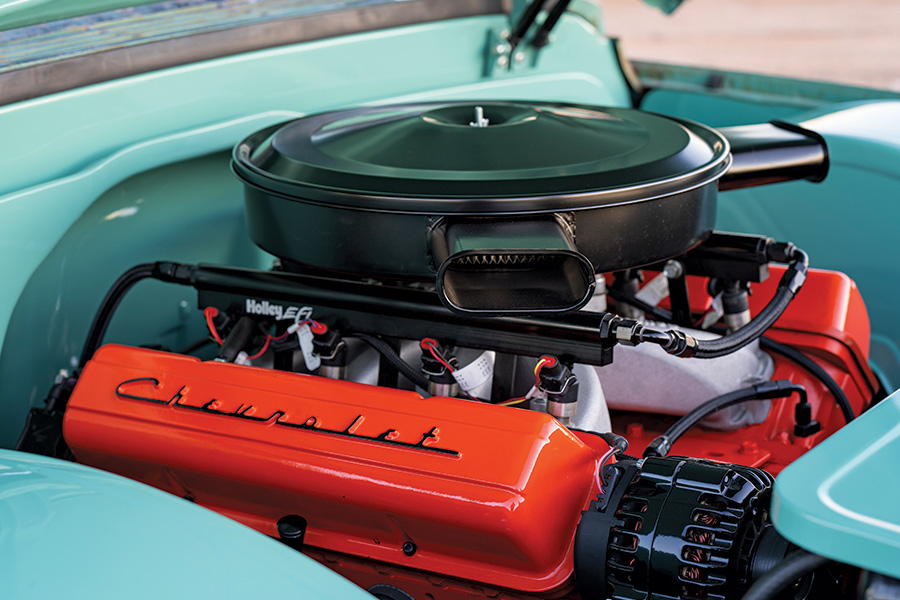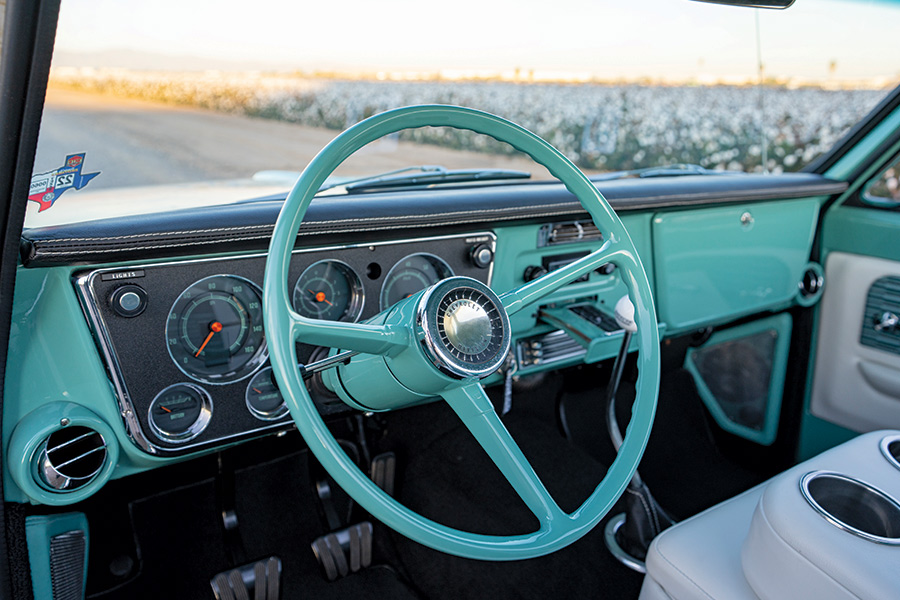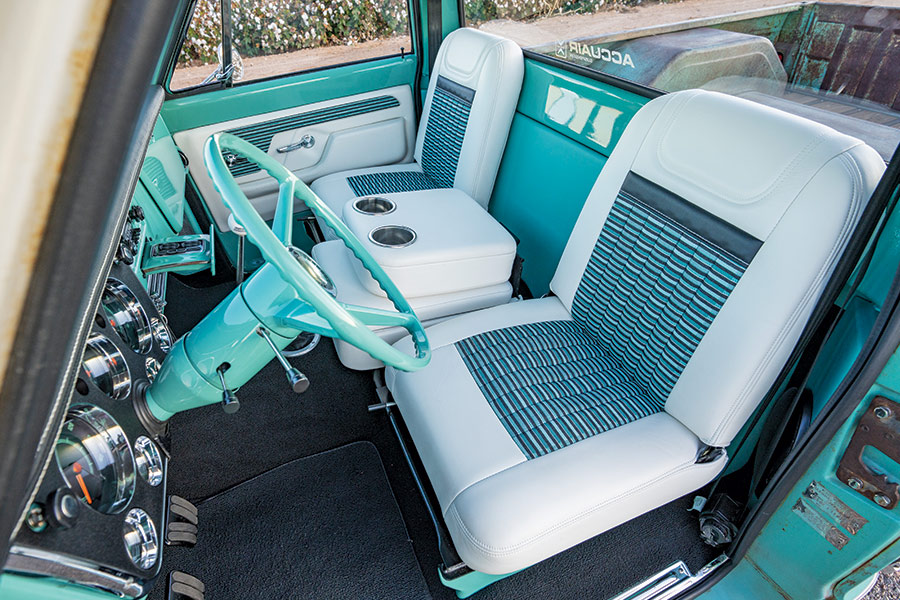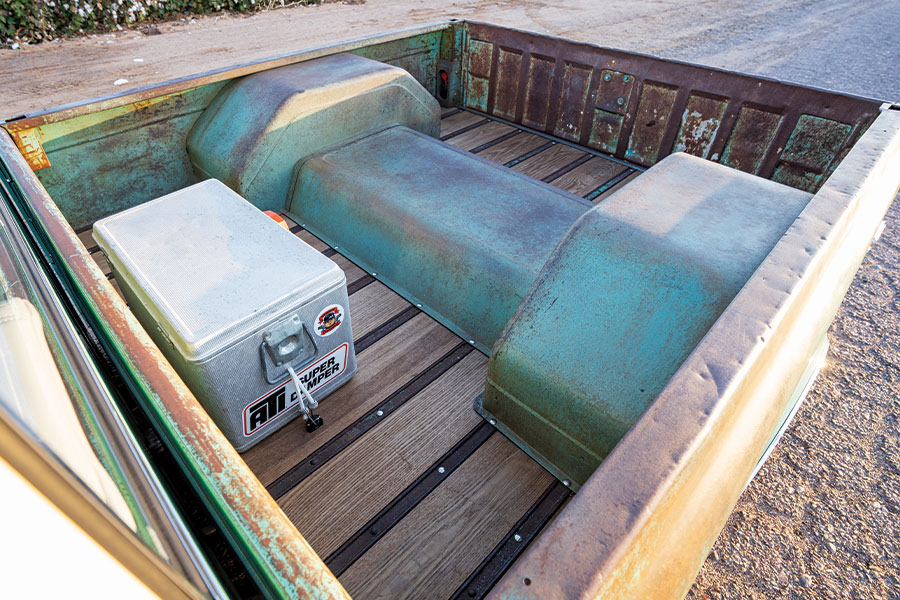
 Feature
Feature
 Photography BY Grinder TV
Photography BY Grinder TVvery owner/builder gets a tech sheet to fill out after their truck’s been photographed for a feature—it’s SOP (standard operating procedure) in the magazine world. Some choose to fill it out with a “yes/no” for, well, pretty much everything, leaving us to do the research info-wise, while others take the time to go above and beyond answering the simple “why/how” questions. A good example is Mike Bigelow with his slick C10 “Sweet ’Tina.” Since he stated the facts oh-so matter-of-factly, we figured why not let him tell his own story. Take it away, Mike!



The hard part was what to do with the bed as I wanted to keep it old and beat up, but we had to build bigger rear tubs and a hump to accommodate the suspension raising and lowering. Hart and I were discussing it and I told him I wanted to keep the rust and dents in the bed but don’t know how we pull that off with all the new metalwork we had to do. He told me he had a guy who could match that patina if I wanted to try it. I said it’s worth a try—if it doesn’t work we were going to have to paint the inside of the bed anyway. After he finished all the metalwork, he sent the truck to Street Machinery/Patina Plantation for patina match. When I went and picked it up I could not believe the patina match—it’s mind blowing. If I didn’t tell you it was once a longbed you would never know it; Jerome with Street Machinery killed it. It is a piece of art, in my opinion.
I also wanted a manual transmission because to me nothing screams “hot rod” more than a stick shift. But again, I wanted as modern as I could get, so I went with a TREMEC six-speed.
All the dash instruments I wanted as original-looking as possible, so I went with a Dakota Digital RTX instrument cluster with original ’68 script and colors but with all modern digital features. For the radio I went with RetroSound—again, looks original but has all modern features, Bluetooth, hands-free, and so on. All the chrome trim was original ’68 trim from another truck. I had it repaired and repolished and I had to repaint the black stripe myself. I stuck my AccuAir e-Level push-button controls in the ashtray so that if I want to hide them for the original look I just have to slide in my ashtray. The seats are a Slosh Tubz Bench Buddy seat frame that match the original option available in 1968 (the truck actually came with a bench seat) to keep with the original theme. The ’68 seats were available in white vinyl with a fabric insert, so with that in mind my wife suggested white leather seats and door panels with fabric inserts. The fabric is not circa-1968 but it matches the interior/exterior colors perfect (I believe it’s from a late-’50s or early-’60s Bel Air).
All the wiring/air lines I ran through the frame to keep them hidden; I put all the electronics, air/valve controls, and fuses behind the seats and built a valance to hide everything and cover it with custom, green-dyed leather that perfectly matches the 503 green interior paint color. You won’t see any of the modern technology unless you really search for it. Also, Alpine amps and (two) 10-inch subwoofers were all hidden under and behind seats.
One of the items I’m most proud of is actually the first thing I did when I got the truck. I cut down the original 17-inch steering wheel to 15 inches. There was no one making an original-looking ’68 Cl0 steering wheel in that diameter at the time, so in keeping with the truck’s original-looking theme, I set out to make my own 15-inch steering wheel. I built a round jig and started cutting the original steering wheel down and resizing it. I had never done it before, so after I would say at least 100 manhours, mostly sanding, I have an original-looking 15-inch ’68 C1O steering wheel. Now when I show the truck, only about 1 out of every 500 people who see it ask me, “Where did you get that steering wheel?!”
By the way, as for the name, my wife named the truck “Sweet ’Tina,” which I absolutely love!


